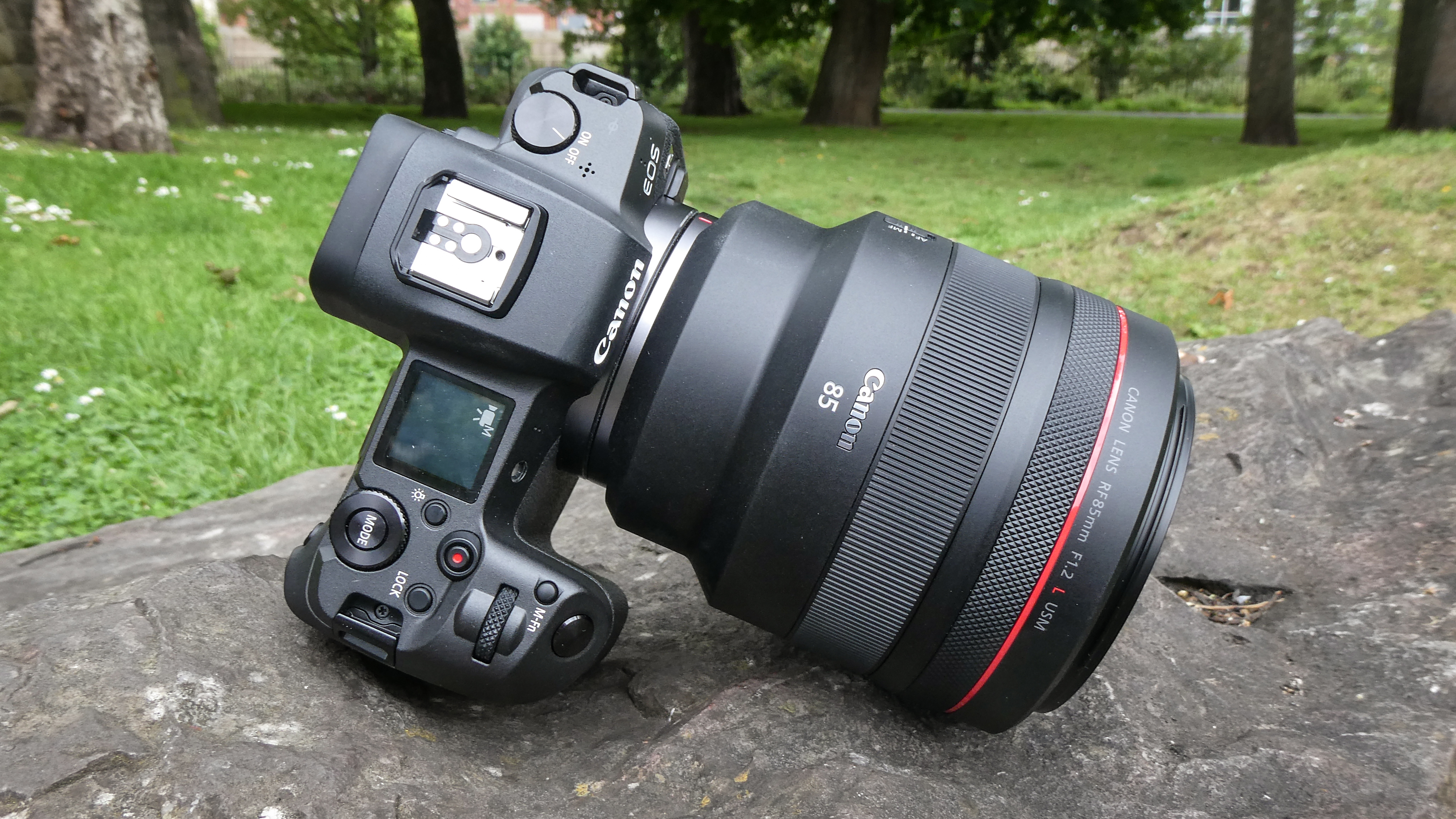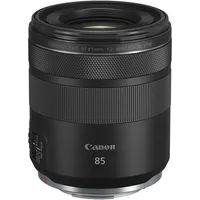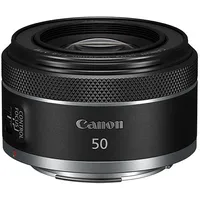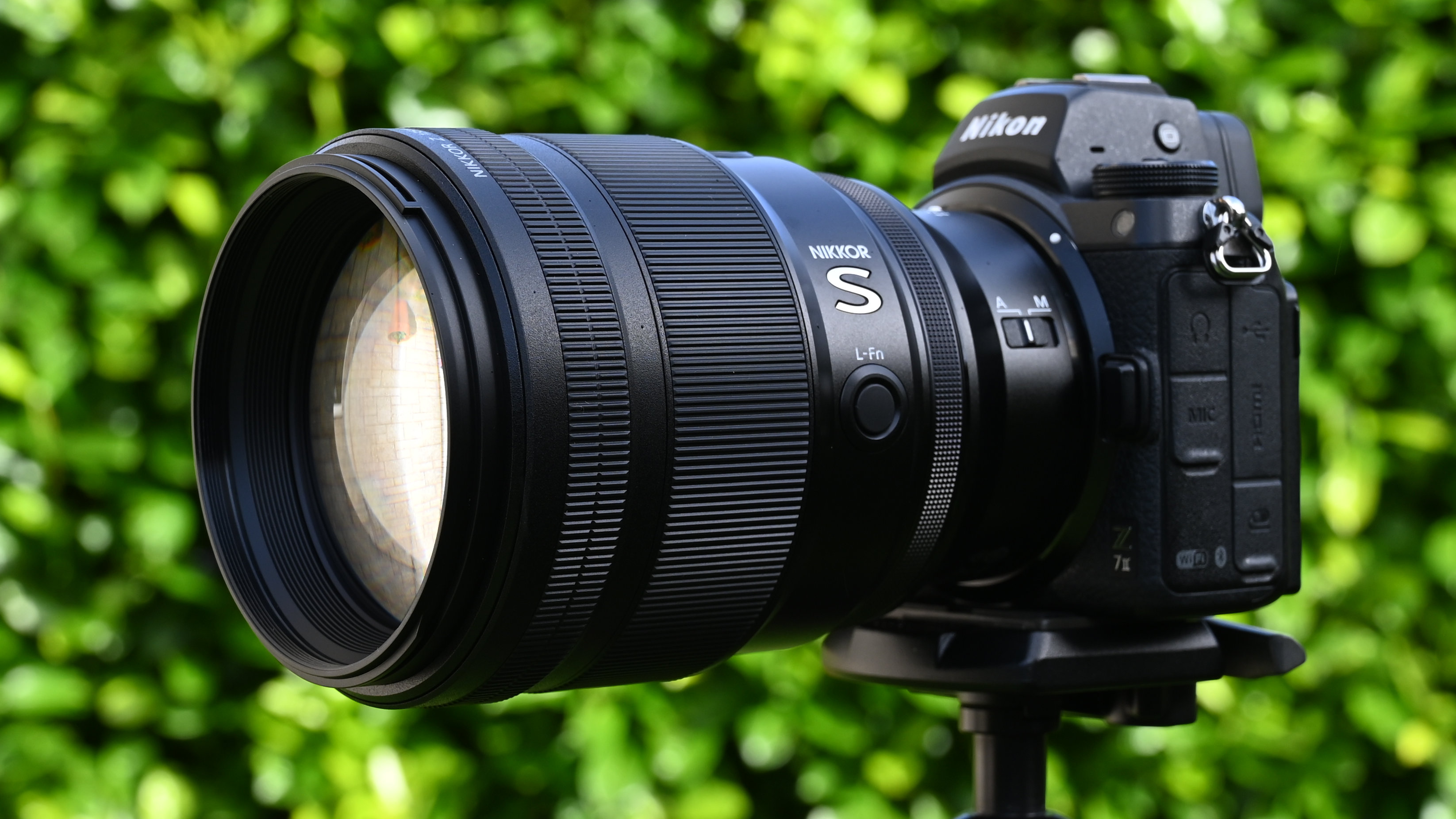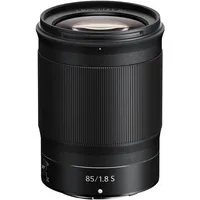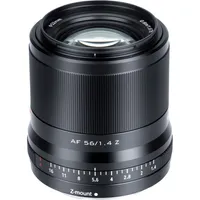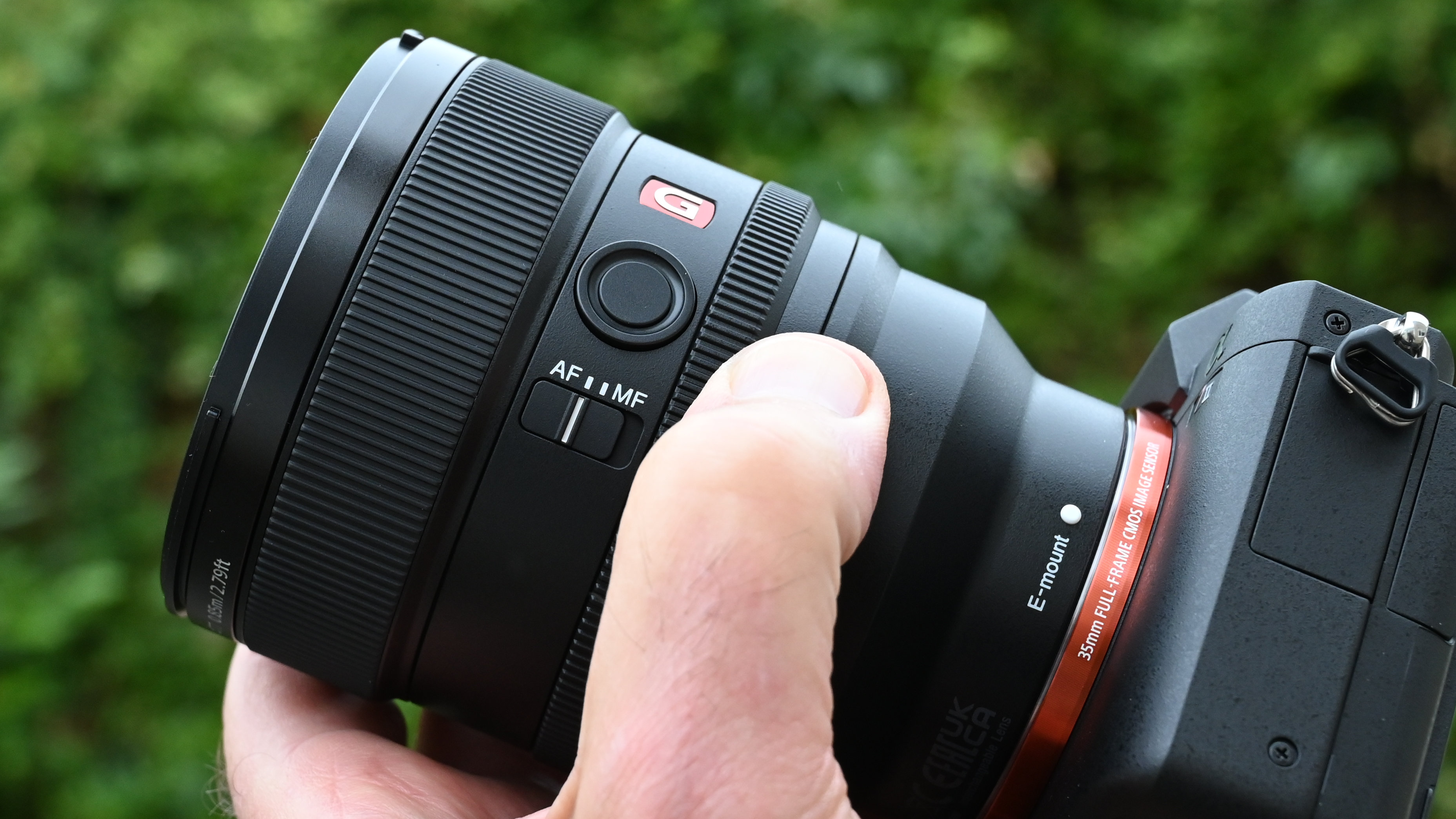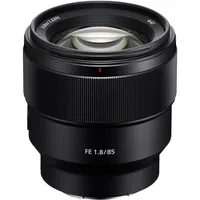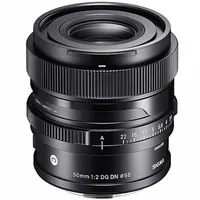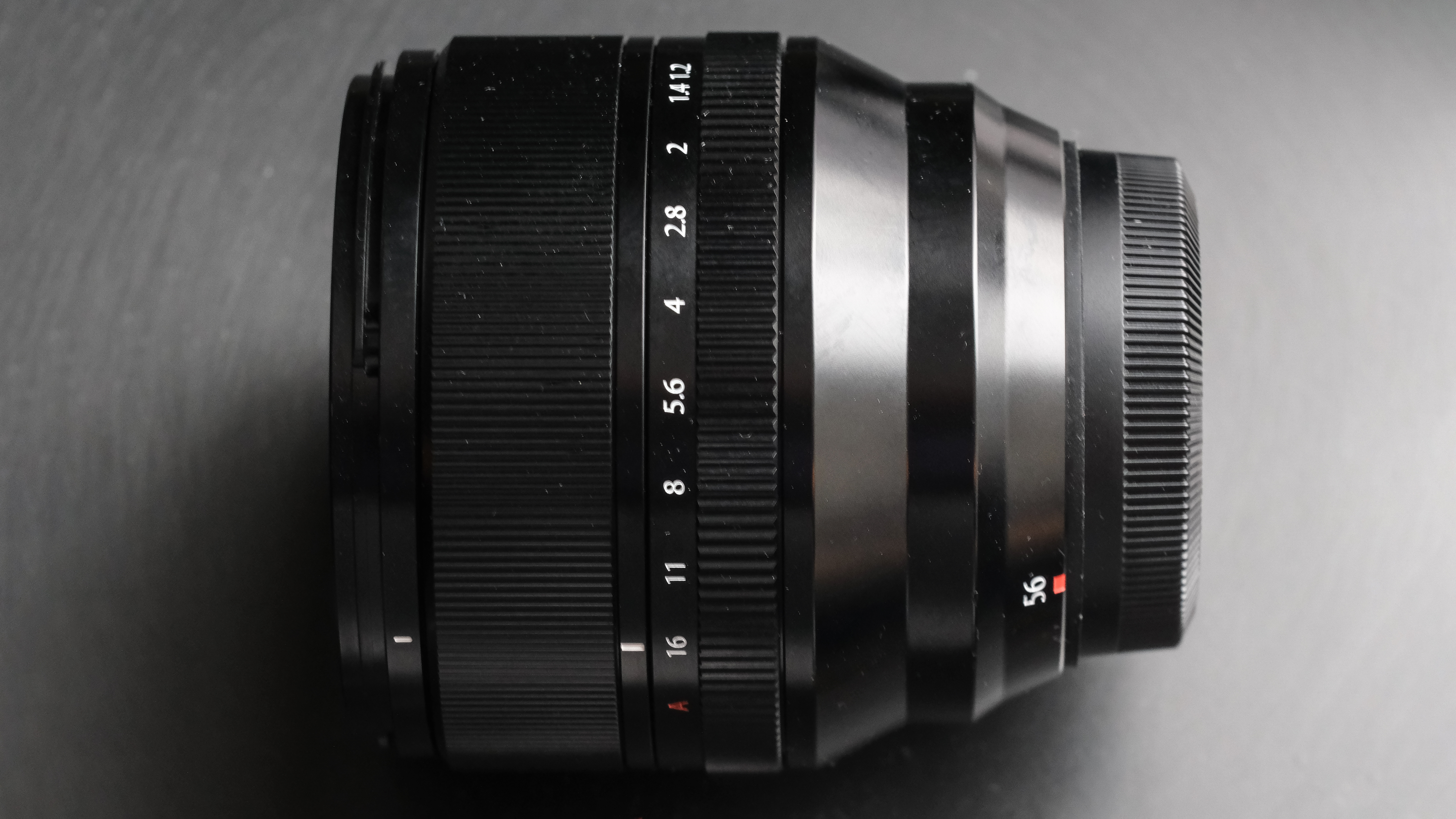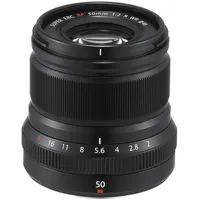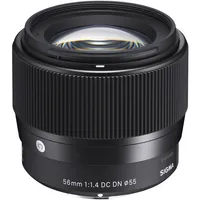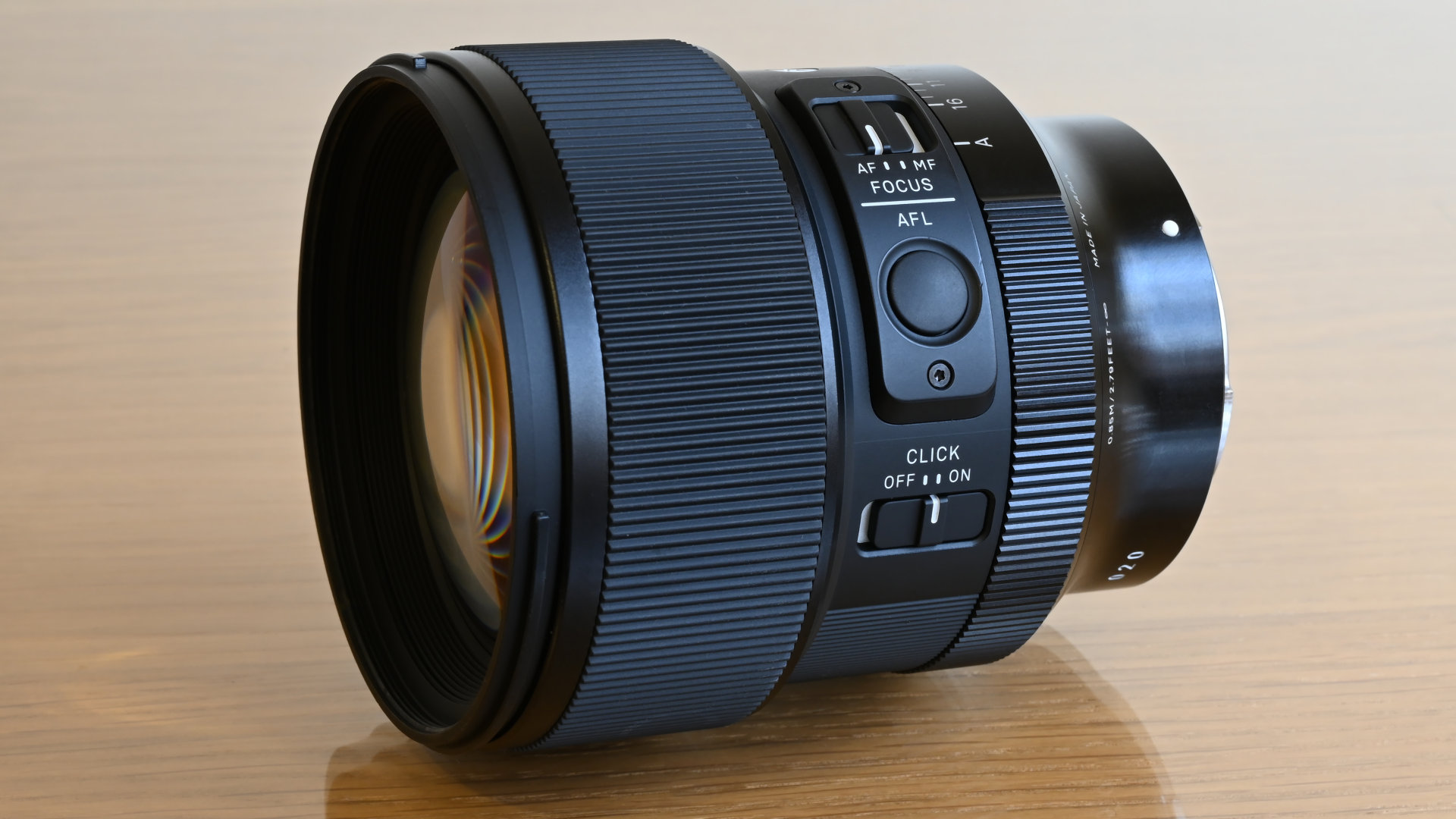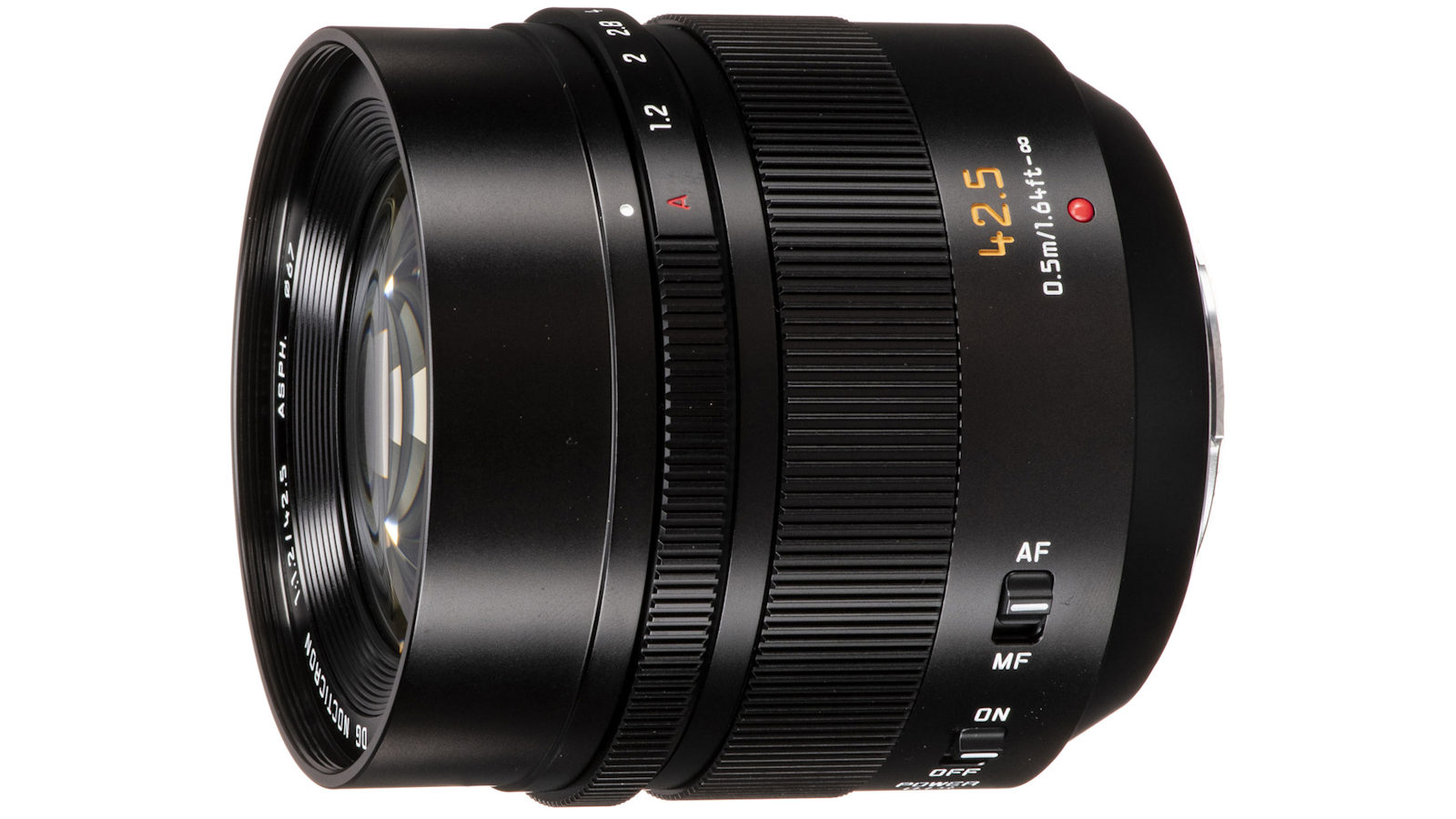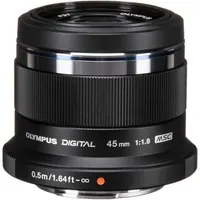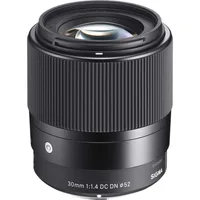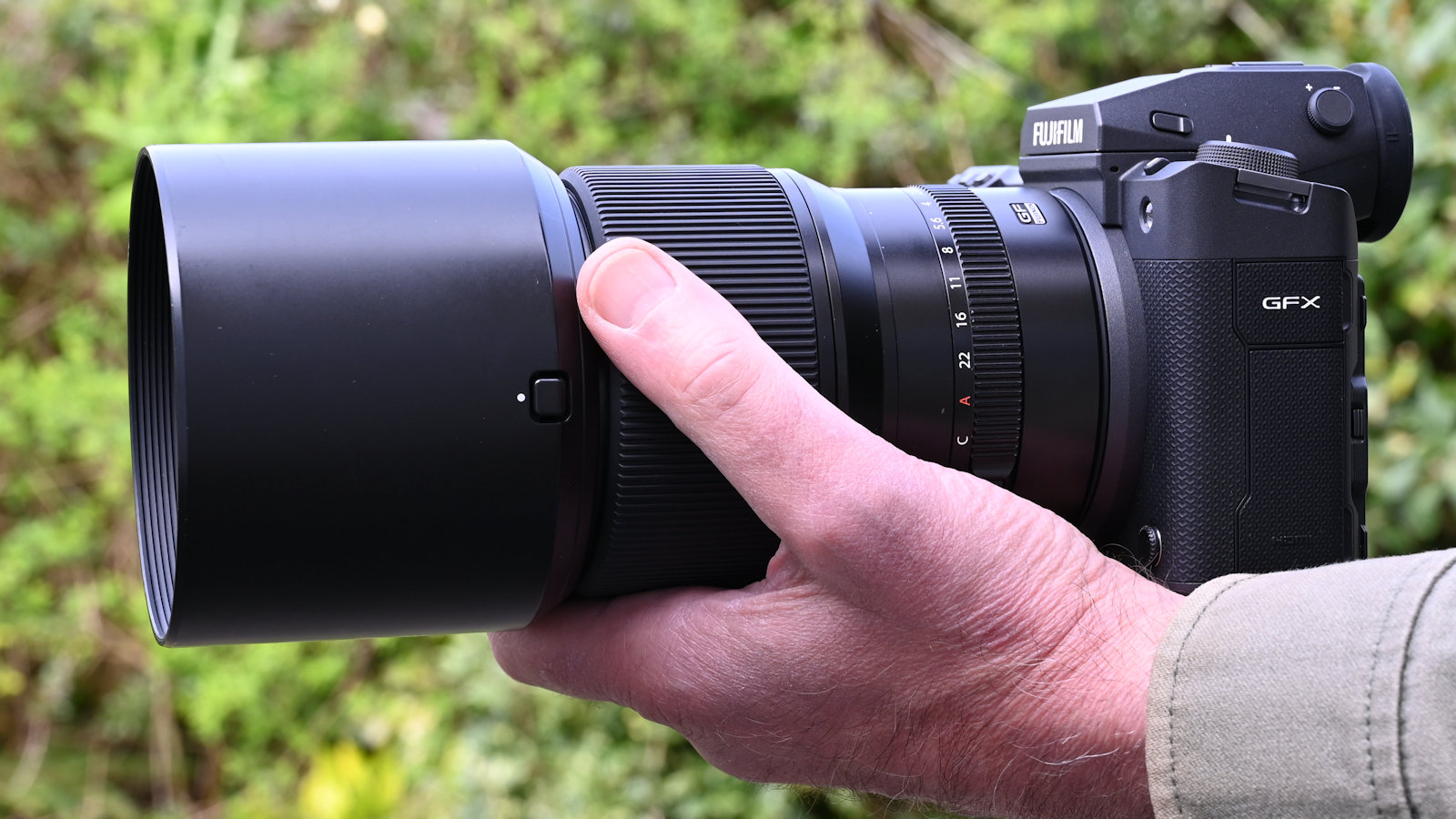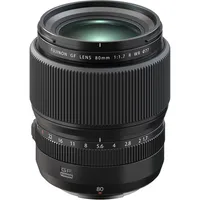The best lens for portraits in 2025: short-tele primes perfect for pictures of people
Check out these picture-perfect portrait primes Canon, Nikon, Sony, Fujifilm, Olympus, Panasonic, Leica and Sigma mirrorless cameras, plus plenty of budget-friendly alternatives
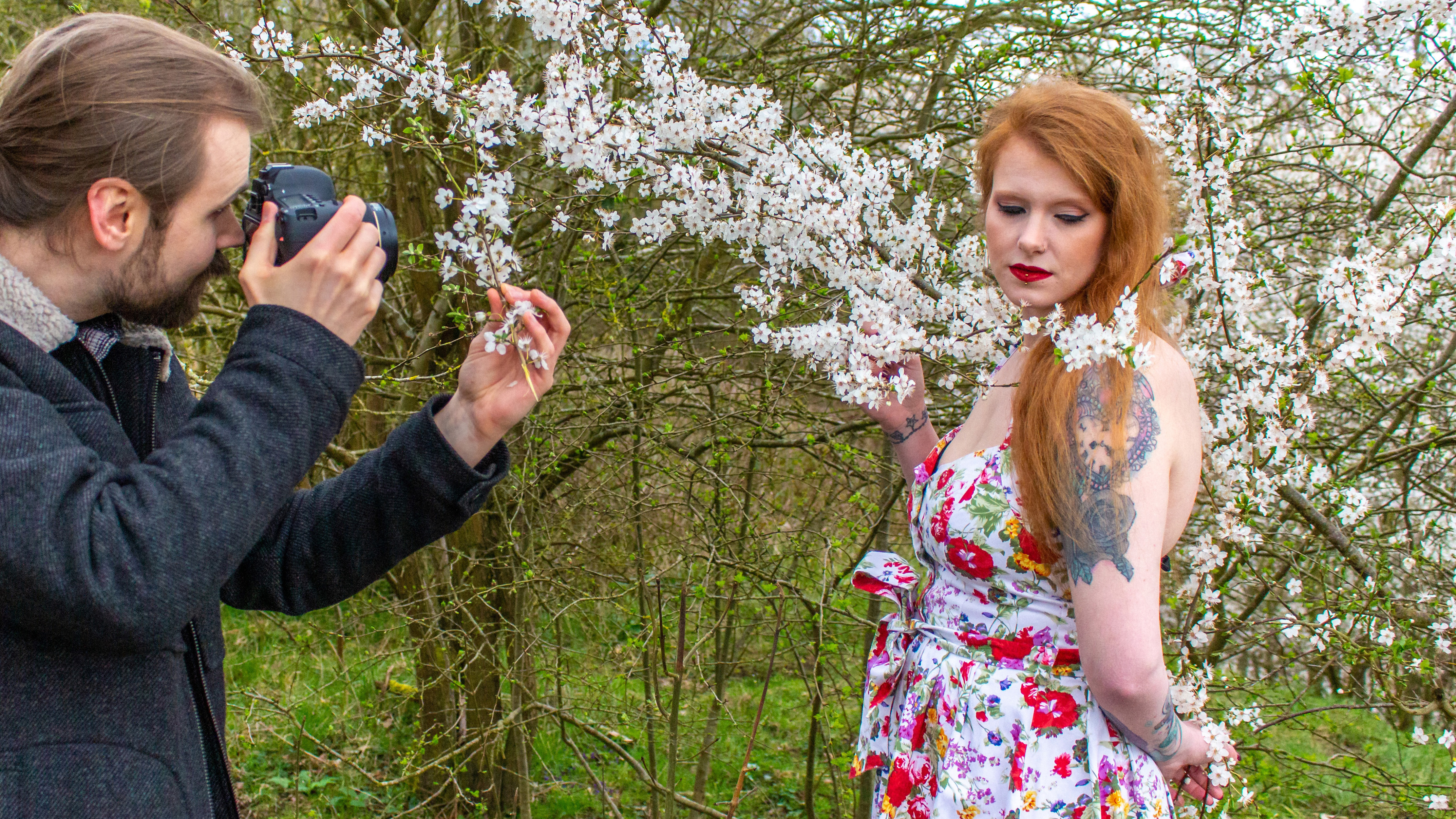
My go-to lens for portraiture with a full-frame camera is a fast 85mm prime. Like many photographers, I find the focal length is ideal for head-and-shoulders and half-length portraits, so I can be close enough to engage with my subject, but not so close that I’m invading their personal space. The short telephoto length also gives a flattering perspective, while a tight depth of field is perfect for blurring fussy backgrounds and giving full attention to the main subject. For crop-sensor cameras, a lens with around a 50mm focal length is ideal.
However, just as there are many ways to cook an egg, there are lots of different options for portraiture. Again, for full-frame cameras, a longer focal length of around 135mm works better for tight head shots, whereas the best 50mm standard primes are more ideal for full-length and ‘environmental portraits’, where I want to set the scene by photographing somebody in the context of their surroundings. For the latter, I won’t need such a ‘fast’ lens, as a narrower aperture will give me a larger depth of field for keeping more of the overall scene sharp.
In this buying guide, I’ll be picking out the best-buy portrait primes for all leading camera brands, from Micro Four Thirds and APS-C, to full-frame and medium format. That said, the best 70-200mm zoom lenses are also popular for portraiture, especially among wedding and event photographers. But for now, let’s crack on with prime time...

Matthew Richards is a photographer and journalist who has spent years using and reviewing all manner of photo gear. He is Digital Camera World's principal lens reviewer – and has tested all the portrait primes on this list.
The Quick List
Here's a quick rundown of all the portrait prime main contenders in this guide. Scroll down for a more in-depth look at the individual products.
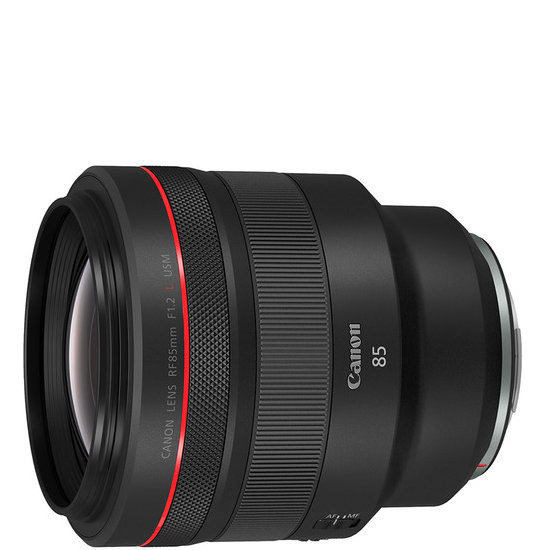
I think this is Canon’s best-ever portrait lens, and they’ve made quite a few over the years! The f/1.2 aperture delivers a really tight depth of field and the quality of bokeh is gorgeous. I get a massively better hit rate than with previous ‘EF’ versions of the lens.
Read more below
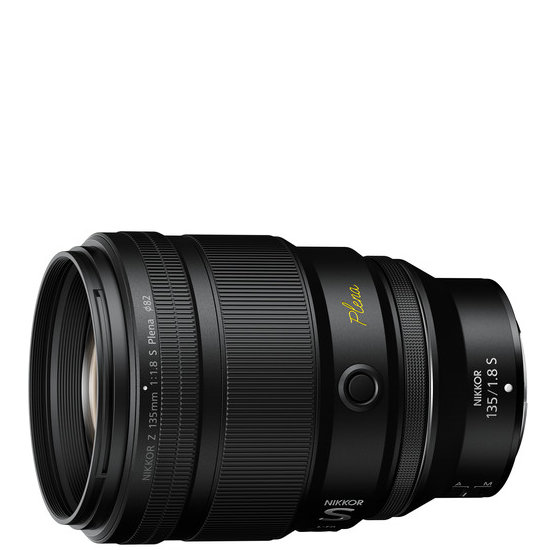
This is my all-time favorite Nikon lens. The focal length is a bit on the long side for some types of portraiture, but the lens delivers spectacular clarity and incredibly beautiful bokeh, with a lovely roll-off between focused and defocused areas.
Read more below
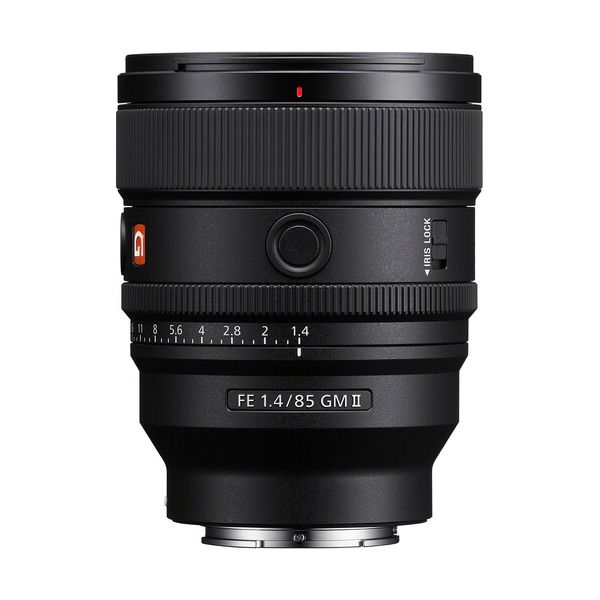
Sony’s G Master lenses have earned a great reputation for combining standout sharpness with smooth bokeh, and this update over the already stellar original is one of the best in the range, with improved autofocus and a much lighter build.
Read more below
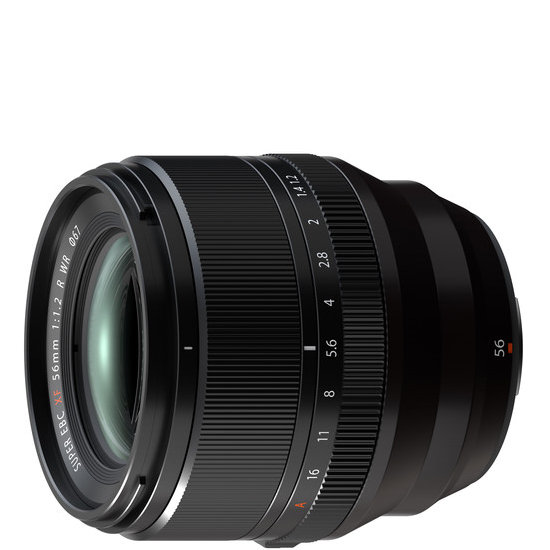
With high-end build quality and handling, image quality, and all-round performance, this is my first choice for portraiture with Fujifilm X-system cameras. It beats the preceding ‘APD’ version of the lens, despite ditching the Apodization filter.
Read more below
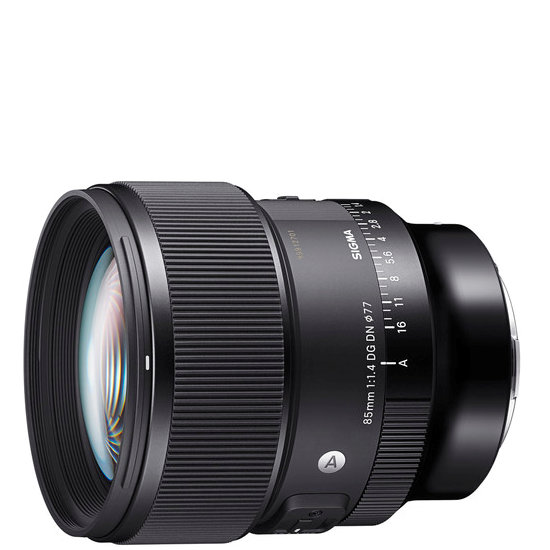
The ‘DG HSM’ edition was one of my favorite portrait lenses for Canon and Nikon DSLRs, and was later made in Sony E mount. The newer ‘DG DN’ edition is completely redesigned for L-mount and E-mount mirrorless cameras, and it’s superb.
Read more below
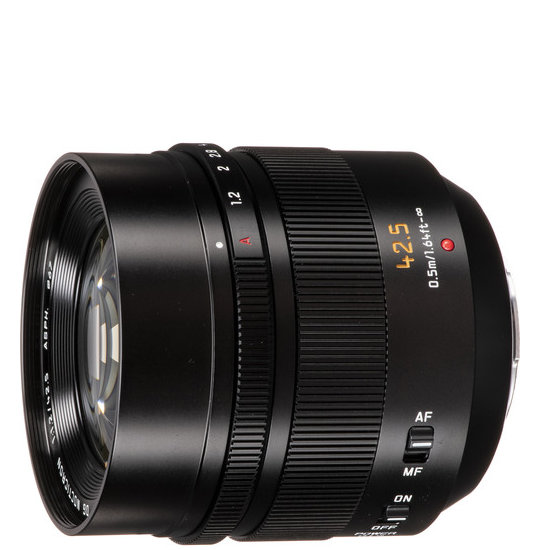
The 2x crop factor of Micro Four Thirds cameras can make getting a tight depth of field a challenge. This lens comes to the rescue with its super-fast f/1.2 aperture, while giving a useful ‘effective’ 85mm focal length in full-frame terms.
Read more below
Load the next products ↴
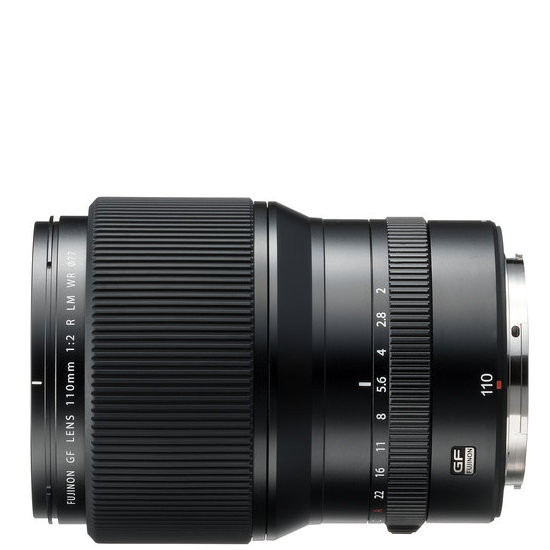
Fujifilm’s medium format GFX cameras are backed up by a formidable and continually growing range of top-quality lenses. This 110mm prime is roughly equivalent to using an 85mm f/1.4 lens on a full-frame camera and is the pick for portraiture.
Read more below
The best portrait lenses I recommend
Why you can trust Digital Camera World
Best for Canon RF
Specifications
Reasons to buy
Reasons to avoid
✅ You really feel the need for a super-fast aperture rating, and you’re prepared to pay top dollar for one of Canon’s all-time finest lenses.
✅ You want a significant step up from the older ‘EF’ versions of the lens.
❌ You don’t want such a bulky, heavyweight lens for portraiture.
❌ You’re put off by the lack of optical image stabilization can also be an issue with EOS R-system cameras that don’t feature in-body image stabilization.
For me, this lens is as good as it gets for portraiture with a Canon EOS R-system camera. I’ve used Canon’s somewhat legendary EF 85mm f/1.2 lenses on DSLRs but found that autofocus inaccuracies gave me a poor hit rate, because the really tight depth of field when shooting wide-open at f/1.2 demands pinpoint precision. The RF lens not only has faster autofocus but takes full advantage of the ‘intelligent’ face/eye detection of cameras like the EOS R5 and R6 Mark II, delivering consistently accurate autofocus time after time.
The lack of optical image stabilization can be an issue with non-stabilized bodies like the EOS R, RP and R8, but, in fairness, the fast aperture enables quick shutter speeds even under low lighting levels. There’s an even pricier Canon RF 85mm f/1.2L USM DS (Defocus Smoothing) version of the lens that features an apodization filter to smooth the outlines of ‘bokeh disks’ formed from defocused lights, but that reduces light transmittance and I find that the slowdown in shutter speeds can be an issue. Either way, both lenses enable up to 8 stops of stabilization when used with EOS R-system cameras with IBIS (In-Body Image Stabilization).
Ultimately, the lens gives superb sharpness in the central region of the image frame even when shooting wide-open. Sharpness drops off towards the edges and corners, but, for portraiture, I don’t find that a problem. And although the standard edition of the lens doesn’t have ‘Defocus Smoothing’, the quality of bokeh is lusciously soft and dreamy. It’s the one I’d go for.
Read more: Canon RF 85mm f/1.2L USM review
Honorable mentions
Canon RF 85mm f/2 Macro IS STM
I rate this lens highly for portraiture and many other shooting scenarios as well. The f/2 aperture rating still enables a pretty tight depth of field, it has optical image stabilization, and even a 0.5x macro facility for extreme close-ups.
Canon RF 50mm f/1.8 STM
On an APS-C format camera like the EOS R50 and R100, this lens gives an ‘effective’ focal length of 80mm, coupled with a fast f/1.8 aperture. It takes portraiture in its stride and is one of the most affordable Canon RF lenses on the market. Bargain!
Best for Nikon Z
Specifications
Reasons to buy
Reasons to avoid
✅ You favor tight portrait shots and close-ups, where the 135mm focal length comes into its own.
✅ You’re prepared to pay the price for spellbinding image quality and a lens that’s set to become an instant classic.
❌ You’d rather have a more typical 85mm focal length that gives a conventional field of view for many portraiture scenarios.
❌ You’d prefer a more compact and lightweight portrait lens, or one with a faster aperture.
I’ve used every single Nikon Z-system lens released so far, and have been universally impressed. The Plena stands out as something really special, but let’s get one thing straight: there’s absolutely nothing wrong with the Nikon Z 85mm f/1.2 S. It’s a practically perfect portrait lens, and many will favor its more typical focal length. So why do I prefer the Plena? For one thing, it’s scary-sharp right out to the extreme edges and corners of the image frame, even wide-open at f/1.8, should I feel the need. But the clincher is the quality of bokeh, which is exceptionally smooth and dreamy. The roll-off between focused and defocused areas looks entirely natural, and bokeh disks remain extremely well-rounded, even out towards the edges and corners of the frame. They also remain very well-rounded when stopping down a little, thanks to the lens’s 11-blade aperture diaphragm.
Handling is excellent. It’s undeniably quite a big and hefty lens, but it doesn’t feel cumbersome. Finery includes two customizable L-fn buttons, for the likes of AF-on and AF-hold, plus an additional customizable control ring that I like to use for aperture, ISO, or exposure compensation, as the mood takes me.
So yes, it’s a tough choice between the Z 85mm f/1.2 and this Z 135mm f/1.8, especially as they both cost about the same price. But the Plena is my favorite.
Read more: Nikon Z 135mm f/1.8 S Plena review
Honorable mentions
Nikon Z 85mm f/1.8 S
If you don’t feel a burning desire for the faster aperture of the Nikon Z 85mm f/1.2 or the longer focal length of the Nikon Z 135mm f/1.8, this is the lens to go for. It’s much more compact, lightweight, and reasonably priced, and it delivers excellent image quality.
Viltrox AF 56mm f/1.4 Z (DX)
For shooting with a DX (APS-C) rather than FX (full-frame) Z-system camera, this Viltrox is my go-to lens for portraiture. It gives an effective focal length of 84mm, coupled with a fast f/1.4 aperture. It’s a really high-quality lens and a real steal at the price.
Best for Sony E
Specifications
Reasons to buy
Reasons to avoid
✅ You’re sold on G Master quality and performance and want to stick with an own-brand lens for your Sony camera.
✅ You feel the need for speed – this is currently Sony’s fastest 85mm prime.
❌ You’d rather save some cash and go with the Sigma 85mm f/1.4 DG DN Art lens, which is available in E-mount and L-mount, and only costs around two-thirds of the price to buy.
❌ You’d prefer to downsize to an f/1.8 lens and have something more lightweight for handheld portraiture.
The Sony FE 85mm f/1.4 GM II replaced the Mark I version of the lens after eight years of service. I had long rated the original as the best portrait-oriented prime for Sony E-mount cameras, but its replacement goes even better, incorporating several updates to improve upon the G Master, with Sony addressing several criticisms, notably its weight and autofocus performance. The Mark II version is significantly lighter, weighing 642g compared to the original's 820g. It also boasts faster and more responsive autofocus, thanks to the inclusion of two XD linear motors. The lens maintains the exceptional sharpness of its predecessor, even when used wide open at f/1.4, and produces a very pleasing, soft bokeh.
In addition to the weight reduction and autofocus improvements, the lens features upgraded Nano AR II coatings. These coatings are designed to minimize ghosting and flare, enhancing image quality in challenging lighting conditions. The lens also includes an extra function button, which I found to be particularly useful when shooting in portrait orientation. Other physical enhancements include an iris lock switch and a click/de-click switch for the aperture ring, providing more control over exposure.
It is particularly suitable for portraiture thanks to its combination of sharpness, sublime bokeh, and 85mm focal length, and is a top-tier performer in all respects, delivering professional-grade results. However, this high level of performance comes with a premium price tag.
Read more: Sony FE 85mm f/1.4 GM II review
Honorable mentions
Sony FE 85mm f/1.8
Nor nearly as heavy as the f/1.4 G Master lens, this one’s a smart buy if you want a more compact prime. It’s relatively lacking in features, but image quality is impressive nonetheless.
Sigma 50mm f/2 DG DN Contemporary
As one of Sigma’s Contemporary lenses, this one’s designed to be small and lightweight. Even so, it’s impeccably built and features an aperture control ring, albeit without a de-click option.
Best for Fujifilm X
Specifications
Reasons to buy
Reasons to avoid
✅ You want a tight depth of field from an APS-C format camera. That’s always more of a challenge than with full-frame but the super-fast f/1.2 aperture helps out.
✅ You want strong, weather-sealed build quality and like having an aperture control ring.
❌ You only want to spend about half the price and would be happy to settle for something a little less exotic, with a slower aperture rating.
❌ You have an Olympus camera, in which case the aperture ring won’t work.
There were question marks over the sharpness of the original Fujifilm XF 56mm f/1.2 lens. The second edition added an apodization filter to further improve the quality of bokeh, especially around the edges of bokeh disks, but with an unavoidable reduction in light transmission. My pick for Fujifilm X-system cameras is this third in the series, which is sharper, ‘faster’ in real terms, and very robust, complete with weather-seals.
It's quite chunky for an APS-C format lens, but that’s a price I’m happy to pay for an f/1.2 aperture rating. I like that, as an ‘R’ lens, it has an aperture control ring for intuitive adjustments while shooting. The typical fly-by-wire focus ring works with smooth precision, and autofocus is quick and very quiet, noticeably faster than in previous versions of the lens.
There’s naturally a whole lot more to image quality than just sharpness. As well as being pin-sharp, even wide-open at f/1.2, the lens has minimal color fringing and distortion, and beautiful bokeh. The 11-blade aperture diaphragm helps to ensure that bokeh remains of excellent quality when stopping down a little.
Read more: Fujifilm XF 56mm f/1.2 R WR review
Honorable mentions
Fujifilm XF 50mm f/2 R WR
With an effective focal length of 75mm in full-frame terms, this is a comparatively pocket-sized lens that’s also much easier on the pocket in terms of purchase price. Naturally, though, the f/2 aperture is comparatively slow.
Sigma 56mm f/1.4 DC DN Contemporary
This Sigma Contemporary lens is conveniently compact and comparatively inexpensive to buy. It gives the same 84mm effective focal length as the pricey Fujifilm lens and is almost as fast, with an f/1.4 aperture rating.
Best for L-mount
Specifications
Reasons to buy
Reasons to avoid
✅ You want premium image quality for portraiture from a lens with a classic 85mm focal length and f/1.4 aperture combination.
✅ You want great build quality and handling without paying over the odds.
❌ You’d rather stick with an own-brand lens for your Panasonic S or Leica full-frame camera system.
❌ You don’t like having an aperture ring on a lens.
I’ve long been a fan of Sigma’s 85mm f/1.4 DG HSM Art lens, which I’ve used extensively with Canon and Nikon DSLRs. Sigma also adapted the lens for Sony mirrorless cameras, but this new ‘DG DN’ Art prime for L-mount as well as Sony E-mount has been redesigned from the ground up, making it a perfect fit for Leica, Panasonic, and Sigma full-frame mirrorless cameras, as well as for Sony. I like that it’s more compact and lightweight than the ‘HSM’ lens (it’s actually a little more than half the weight) and has superior handling, gaining a useful set of onboard controls which include a customizable AF-hold button and an aperture ring that comes complete with a click/de-click switch.
A feast of glass, the lens features no less than five SLD (Special Low Dispersion) elements, along with one aspherical element and four high-refractive-index elements. I’ve found that the arrangement lives up to its billing, delivering exceptional sharpness and contrast while also minimizing both lateral and axial chromatic aberrations. The latter is a common problem with fast-aperture lenses, giving rise to color fringing across the entire image frame. The quality of bokeh is simply beautiful.
As with many recent lenses designed for mirrorless cameras, this Sigma relies on automatic in-camera correction for distortion. Vignetting can also be rather noticeable at f/1.4, but I often quite like that for portraiture, and, again, automatic in-camera correction is available.
Read more: Sigma 85mm f/1.4 DG DN Art review
Honorable mentions
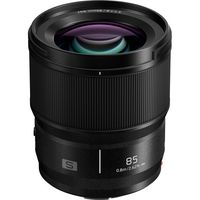
Panasonic Lumix S 85mm f/1.8
Naturally, this lens is slower than the Sigma f/1.4 but it’s also smaller and lighter, and only around half as much to buy. Handling is relatively basic but the lens is good value all the same.
Best for Micro Four Thirds
Specifications
Reasons to buy
Reasons to avoid
✅ You want a tight depth of field for your portraiture, which can be notoriously difficult to achieve with Micro Four Thirds due to the 2x crop factor.
✅ The f/1.2 aperture not only helps with depth of field, but also enables quick shutter speeds in low lighting conditions.
❌ You’d rather settle for an f/1.4 or f/1.8 aperture rating, in which case there are much more affordable options available at around a third of the price of the Nocticron.
❌ You’d prefer a relatively small, lightweight lens, in which case an f/1.8 prime would be better.
If you’re a Micro Four Thirds shooter, you’ll have noticed (like me) that depth of field is governed more by ‘actual’ rather than ‘effective’ focal length, so getting a tight DOF for blurring the background in portraiture can be a challenge. This lens is hugely helpful, combining a portrait-friendly 90mm effective focal length with a super-fast f/1.2 aperture. Indeed, it’s not only certified by Leica but coins a whole new Leica 'Nocticron' definition, denoting its aperture speed. A real rarity, it's an f/1.2 lens that boasts a built-in optical image stabilizer, which is always a bonus when shooting with cameras that lack in-body stabilization.
I like that the lens has switches for quickly and easily turning the stabilizer on or off, and for selecting manual or automatic focusing. It's so much more straightforward than rummaging around in menus on the camera body. I’m also a fan of the aperture control ring, although it can’t be de-clicked for stepless control when shooting video, and doesn’t work when using the lens on Olympus camera bodies.
Sharpness and clarity wide-open at f/1.2 are simply stunning. I’ve found that wide-open sharpness is not only better than from many other f/1.2 lenses, but also edges ahead of quite a few f/1.4 and f/1.8 lenses at their widest apertures. Couple that with this lens’s beautiful bokeh, and you have a portrait photography winner.
Read more: Panasonic Leica DG Nocticron 42.5mm f/1.2 ASPH Power OIS review
Honorable mentions
Olympus M.Zuiko Digital 45mm f/1.8
A downsized delight, this is a wonderfully compact and lightweight lens that’s also very reasonably priced. It delivers very pleasing image quality, but naturally can’t match the f/1.2 lens for a really tight depth of field.
Sigma 30mm f/1.4 DC DN Contemporary
With an aperture rating that’s nearly as fast as in the Panasonic Leica f/1.2 lens, this cut-price Sigma Contemporary lens is a bargain for portraiture. However, the ‘effective’ focal length of 60mm can feel a little short.
Best for Fujifilm GFX
Specifications
Reasons to buy
Reasons to avoid
✅ You own a Fujifilm GFX system medium format camera and want the ultimate portrait lens to use with it.
✅ You like that this lens feels a direct equivalent to using an 85mm f/1.4 lens on a full-frame camera.
❌ You feel that a lens weighing in at just over a kilogram is a bit unwieldy for handheld portraiture.
❌ You’d rather have a shorter focal length for portraiture, that gives a more ‘standard’ field of view.
I like that, in terms of effective focal length and depth of field, this medium format lens for Fujifilm GFX system cameras equates to using an 85mm f/1.4 lens on a full-frame camera. As such, it gives an ideal working distance for head-and-shoulders and half-length portraiture, with plenty of opportunity for blurring fussy backgrounds and making the subject really stand out.
I’ve reviewed several Fujifilm GF lenses and have been hugely impressed by all of them. Common traits are that they’re beautifully crafted, deliver superb image quality and have very refined handling characteristics.
I like that the GF 110mm f/2 has an aperture control ring for intuitive adjustments, and that the autofocus system is based on a typically quick and virtually silent linear stepping motor. Rain needn’t stop play either, as the lens features extensive weather-seals.
Read more: Fujifilm GF 110mm f/2 R LM WR review
Honorable mentions
Fujifilm GF 80mm f/1.7 R WR
Smaller, lighter, and more affordable than the GF 110mm f/2 lens, this one has a more ‘standard’ rather than short telephoto perspective. It’s particularly ideal for half-length to full-length portraits and for environmental portraiture.
How to choose
Focal length
Different focal lengths are better suited to various types of portraiture. On a full-frame camera, 135mm is ideal for tight head shots, whereas 85mm is better for head-and-shoulders and half-length portraits. 50mm also works well for half-length and especially for full-length shots, as well as for ‘environmental portraits’, where you want to set the main subject in the context of their surroundings. When using a crop sensor camera with an APS-C or Micro Four Thirds format image sensor, you’ll need to apply the 1.5x (1.6x for Canon) or 2x focal length multiplier for MFT, respectively, when choosing a lens. For medium format cameras, the opposite applies, as the ‘effective’ focal length in full-frame terms is shorter than the actual focal length.
Aperture rating
In many respects, faster apertures are better for portrait lenses. For any given focal length, lenses with an f/1.2 or f/1.4 aperture enable a tighter depth of field at their widest aperture settings, compared with f/1.8 and f/2 prime lenses, much more so than with zoom lenses that have an f/2.8 or narrower aperture rating. Another plus point of ‘faster’ aperture lenses is that you can maintain quick shutter speeds even under very low lighting levels. That helps to eliminate any motion blur on the part of the subject, for which image stabilization is of no benefit. The flipside is that very fast aperture lenses are typically bigger, heavier, and more expensive to buy.
Autofocus
Most lenses for mirrorless cameras, portrait primes included, have an autofocus system based on a linear (lead-screw) stepping motor. This enables fast and virtually silent autofocus performance for stills, along with smooth autofocus transitions when shooting video. There are also some manual-focus prime lenses on the market that work well for portraiture. Manual focusing aids in mirrorless cameras, like magnified preview and focus peaking, make it easier to focus accurately, but, for convenience, it’s a poor substitute for using an autofocus lens that can take advantage of the face/eye-detection AF options in most mirrorless cameras.
Function buttons
Customizable function buttons can be useful for portraiture. Typically, these will be assigned to AF-hold. You can focus on one of your subject's eyes, lock the focus position, then swivel the camera to achieve your preferred composition. That said, with face/eye-detection autofocus now being the norm, an AF-hold function is of less value.
Aperture control ring
Naturally, you can adjust the aperture setting of your lens using a control dial in most, if not all, current and recent cameras. However, many photographers find it more intuitive to use an aperture control ring built into the lens instead. As such, many portrait prime lenses feature a control ring, which keeps your options open. If you also shoot video as well as still portraits, an aperture ring with a de-click option is preferable, as it enables stepless aperture adjustments.
How we test
We test lenses using both real-world sample images and lab tests. Our lab tests are carried out scientifically in controlled conditions using the Imatest testing suite, which consists of custom charts and analysis software that measures resolution in line widths/picture height, a measurement widely used in lens and camera testing. Our lab tests also reveal the extent of color fringing and distortion. We find the combination of lab and real-word testing works best, as each reveals different qualities and characteristics.
You can find out more about how we test and review on Digital Camera World.
The best camera deals, reviews, product advice, and unmissable photography news, direct to your inbox!
Matthew Richards is a photographer and journalist who has spent years using and reviewing all manner of photo gear. He is Digital Camera World's principal lens reviewer – and has tested more primes and zooms than most people have had hot dinners!
His expertise with equipment doesn’t end there, though. He is also an encyclopedia when it comes to all manner of cameras, camera holsters and bags, flashguns, tripods and heads, printers, papers and inks, and just about anything imaging-related.
In an earlier life he was a broadcast engineer at the BBC, as well as a former editor of PC Guide.
- Adam WaringGuides Editor
